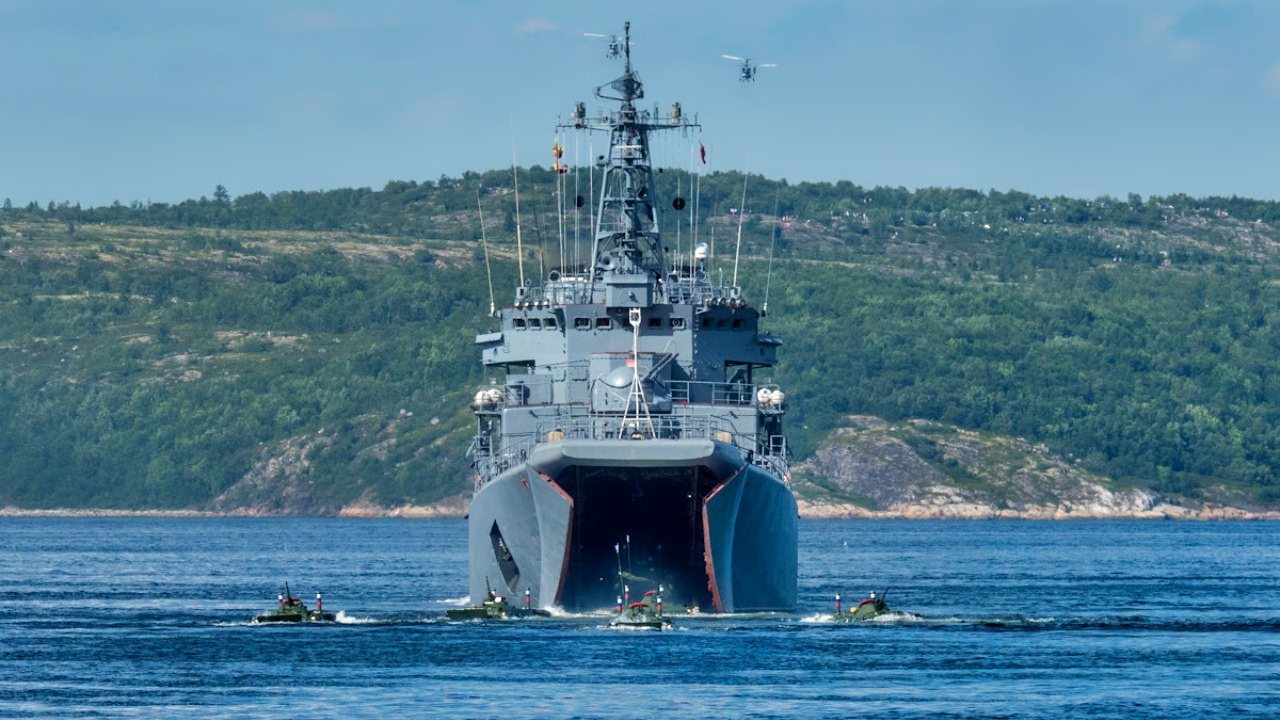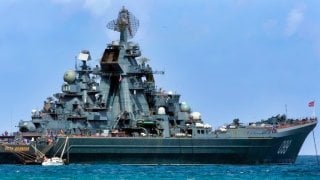The Russian Navy Just Sailed Right Into America's 'Backyard' (Again)
Russian warships, including the training ship Smolny, tanker Yelnya, and patrol vessel Neustrashimy from the Baltic Fleet, docked in Havana, Cuba, marking the second such visit this summer.
Summary and Key Points: Russian warships, including the training ship Smolny, tanker Yelnya, and patrol vessel Neustrashimy from the Baltic Fleet, docked in Havana, Cuba, marking the second such visit this summer.

-This follows a previous visit by the Admiral Gorshkov and Kazan, which were closely monitored by the U.S. Navy. The Smolny, built in Poland and commissioned in 1977, is primarily used for training and lacks significant armament.
-These visits signal a renewed Russian-Cuban alliance, reminiscent of Cold War ties, and are described by Cuban defense officials as a show of "friendship and collaboration." Further deployments to Cuba remain uncertain.
Russian Warships Make Second Visit to Cuba This Summer
During the Cold War, Moscow and Havana maintained close ties – and it appears that Russia is seeking to reestablish its relationship with Cuba. On Saturday, warships from the Russian Navy's Baltic Fleet paid a port visit to the Cuban capital. It comes just weeks after the guided-missile frigate Admiral Gorshkov, accompanied by the Yasen-M-class nuclear-powered guided-missile submarine Kazan – both in service with the Russian Navy's Northern Fleet – made a similar visit to Havana, which is less than 100 miles (160 km) from Florida.
Those two vessels, joined by the replenishment tank Academic Pashi, and a tug boat Nikolay Chiker, remained in Cuba for five days.
This current flotilla of Russian warships lacks the firepower of the previous one – and it consists of the training ship Smolny, tanker Yelnya, and patrol vessel Neustrashimy.
According to a report from Russian state media outlet Tass, the Baltic Fleet mini-armada will remain in Havana until July 30. Cuban defense officials have lauded the recent visits from the Russian Navy, describing them as a show of "friendship and collaboration."
Russia's Polish-Built Training Ship
The Project 877 Smolny is among the oldest Russian ships still in service. Built in Szczecin, Poland, as the lead vessel in a class of training ships for the Soviet Navy, it was commissioned in 1977. Two other vessels of the class were also produced, but one of those was retired and scrapped in the late 1990s.

The 138-meter-long (453 feet long) training ship has a full load displacement of 7,270 tons, yet the ship's armament is limited – consisting of two 76mm AK-726, and two 30mm AK-230 guns. It has a top speed of just 20 knots and a range of 9,000 nautical miles. Designed specifically for training duties, it has a complement of 137, including a dozen officers, while it can operate with 330 or more Russian Navy cadets. How many sailors are on board as part of the current deployment is unclear.
More Visits to Come?
It is unclear if Russia will increase the deployments of its warships to Cuba, but Washington had closely tracked the movements of Admiral Gorshkov and Kazan – each of which can be armed with hypersonic weapons. Last month, the Russian warships were spotted operating east of the Florida Keys and were monitored by U.S. Navy guided-missile destroyers USS Truxtun (DDG-103), USS Donald Cook (DDG-75), and USS Delbert D. Black (DDG-119), the U.S. Coast Guard cutter USCGC Stone (WMSL-758), and more than a half-a-dozen P-8A Poseidon anti-submarine warfare (ASW) aircraft.
However, the deployment of the training ship and support vessels didn't immediately get the same reaction, but no doubt the movements were still closely tracked.
It was just over a year ago that the Project 887 training ship Perekop also made a port call to Havana. Last week Admiral Gorshkov also transited in the Mediterranean Sea and arrived in Algeria.
Author Experience and Expertise: Peter Suciu
Peter Suciu is a Michigan-based writer. He has contributed to more than four dozen magazines, newspapers, and websites with over 3,200 published pieces over a twenty-year career in journalism. He regularly writes about military hardware, firearms history, cybersecurity, politics, and international affairs. Peter is also a Contributing Writer for Forbes and Clearance Jobs. You can follow him on Twitter: @PeterSuciu. You can email the author: [email protected].
All images are Creative Commons and/or Shutterstock.

